Views on Views: Amherst’s Public Parks
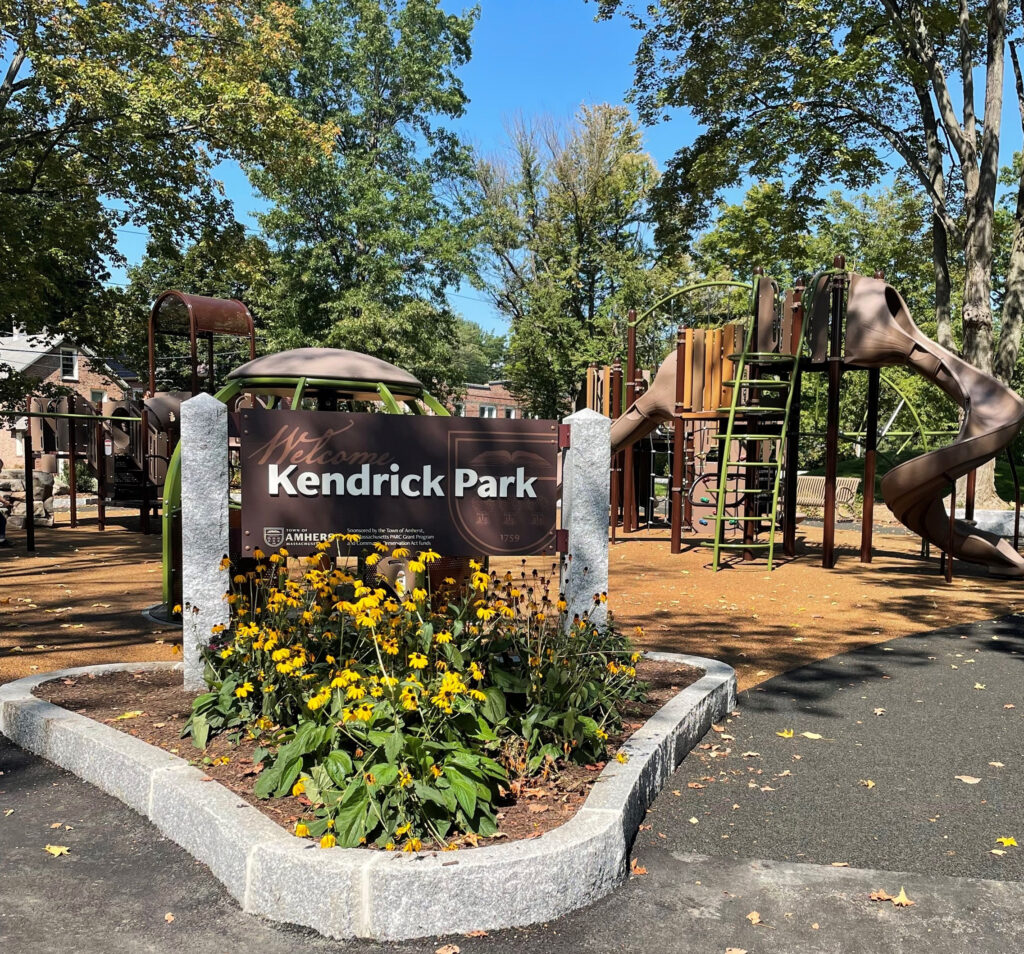
Pedestrian infrastructure improvements near Kendrick Park were recommended to receive the largest allocation of Community Development Block Grant funds ($287,000) in FY -26. Photo: amherstma.gov
By Hetty Startup
This is the fifth column in a ten-part series. View previous articles in the series here.
A series of articles about landscape architecture would be incomplete without one about our town’s parks.
The word “park” itself goes back to the 13th century; it designated a tract of land enclosed for wild animals intended for “the chase” or hunting. Park lands were open land but usually privately owned such as the royal parks of European monarchs. In the late 18th century, it was fashionable for the leisure classes to explore private estates and walk in their meadows, vales and woods. By the 19th century, parks began to be adopted as a landscape feature in some urban areas. Birkenhead Park, near Liverpool, is considered a first in 1847. Parks began to have completely different functions than sports fields or arenas. They were for passive recreation, instead.
Coming from England, I grew up knowing exactly who a “park keeper” was: someone who served as a custodian and careful steward of public lands intended to last into the future. Public parks are a relatively recent phenomenon in our country, and considered the invention of Frederick Law Olmsted, who designed Central Park in New York with Calvert Vaux in 1857-8. Although this famous park obliterated an historic Black settlement called Seneca Village (near the reservoir), the fame of Olmsted’s landscape design firm grew after the Civil War, and in 1874, Emily Dickinson’s brother Austin invited the firm to help the Town of Amherst to envision a new look for our North Common by Town Hall.
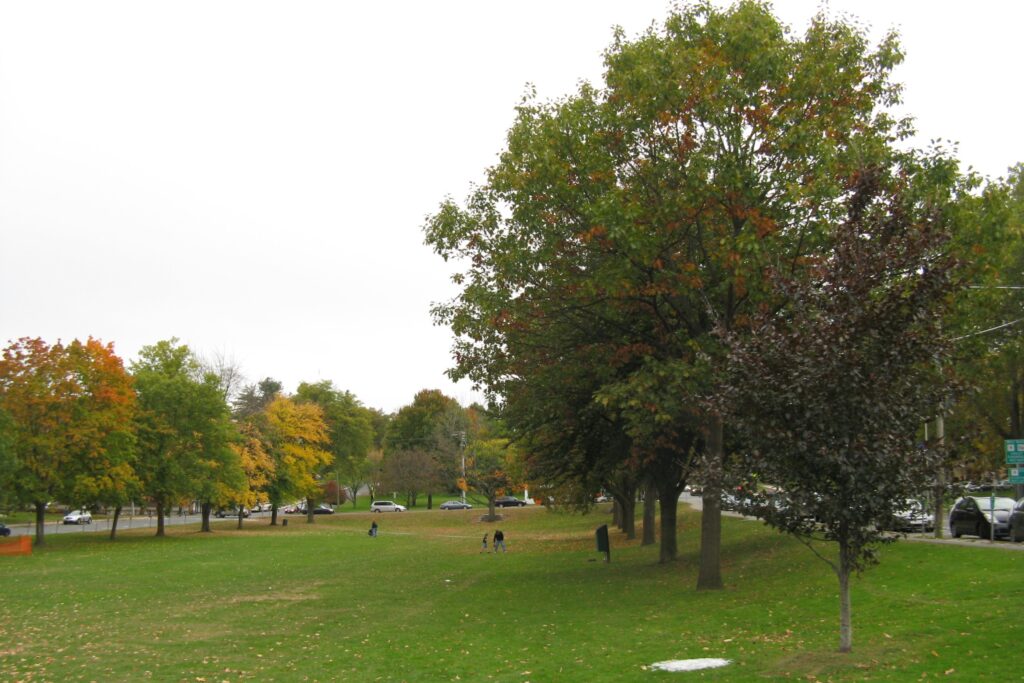
As we approach December and the season of thanks and giving (Thanksgiving is not a warm and fuzzy national holiday for all Americans), I am reminded of how much parks matter. When my kids were young and we visited family, especially cousins, for an annual festive meal together on their grandma’s favorite holiday, it became a tradition for Mum/Aunty Hetty to take all the kids for a walk in the neighborhood before the big meal. As we usually ate when it was dusk, this meant that the children and I set out around 2 p.m., venturing along suburban roads to see the holiday lights lit up and pumpkins out on peoples’ stoops. Our first destination was a small public park with climbing equipment and a swing set; sometimes we made it all the way to the beach. And then we set off back home, ready for supper. It is a fond memory.
Public Parks in Amherst
There are several public parks in Amherst and a few have received some major facelifts since the pandemic. Kendrick Park now has a fully equipped playground, including accessible parking and seating areas. This trend began with the amazing water features called a Splash Pad added to Groff Park in South Amherst and the creation of a town dog park on Belchertown Road, opposite the town’s recycling center. It was only quite recently that the town made funds available for upgrades to Kendrick Park that began life as an open, green space in 1930. In the 1800s, this park didn’t exist and was an historic service-oriented neighborhood where small industrial buildings once mixed with residential neighborhoods known by the 1920s as “The Triangle”, for its formal visual appearance on maps (as below) and the name Triangle Street still recalls this earlier history.


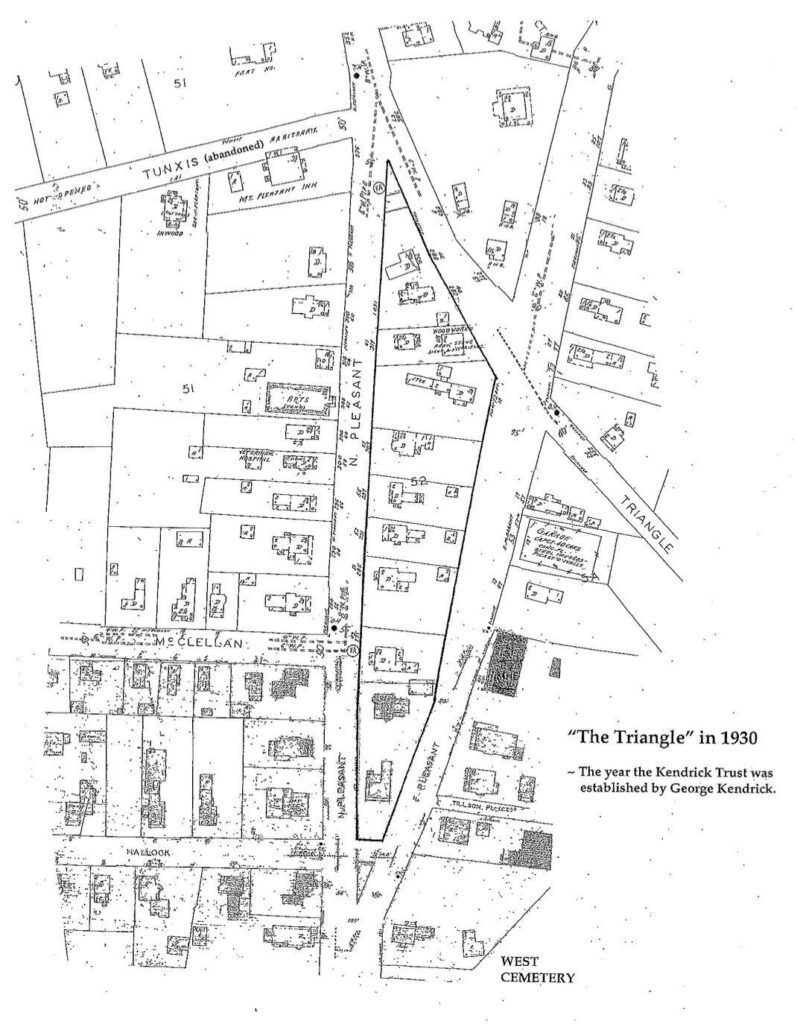
Both Sweetser Park and Kendrick Park have displays of public art.
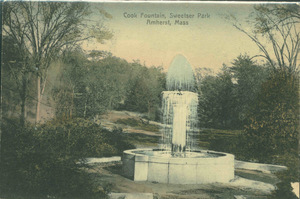

The lighting of the Merry Maple on our North Common [the Town Common] takes place this year on Friday December 5 from 3-6 p.m., making the beginning of the holiday season.

Just as Kendrick Park was named after George Kendrick, an individual philanthropist who helped fund the creation of Kendrick Park, the small park near Town Hall that we call Sweetser Park was also named for its donor, Luke Sweetser. Created in 1836, this open, green space was his gift to the town. Sweetser lived in an imposing Greek Revival house nearby on Lessey Street, now owned by Amherst College.

I now realize why I wanted to do this series because I have written in the Indy about open spaces before and at other times in my life. The significance of Groff Park is covered here.
One area that is almost park-like is Puffers Pond that forms the most important water feature, apart from the Mill River, in the natural landscape of North Amherst. Named for the family who donated the land to the town, including Stephen Puffer (1914-2011), the story of this place becoming a popular recreation spot is covered in another Indy article.
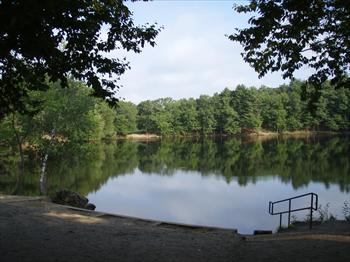
I think our best park is actually our North Common. It is home to the heart of our town with Town Hall on one side, Amherst College to the south, and the current downtown to the north (historically East Amherst had been the earliest town center.) If you haven’t already done so, check out the new design of the northern tip of the common closest to downtown along with the more natural setting where our Farmers Market is located. So many fairs, festivals and performances happen in this space. It represents the best of our town both to residents and visitors.
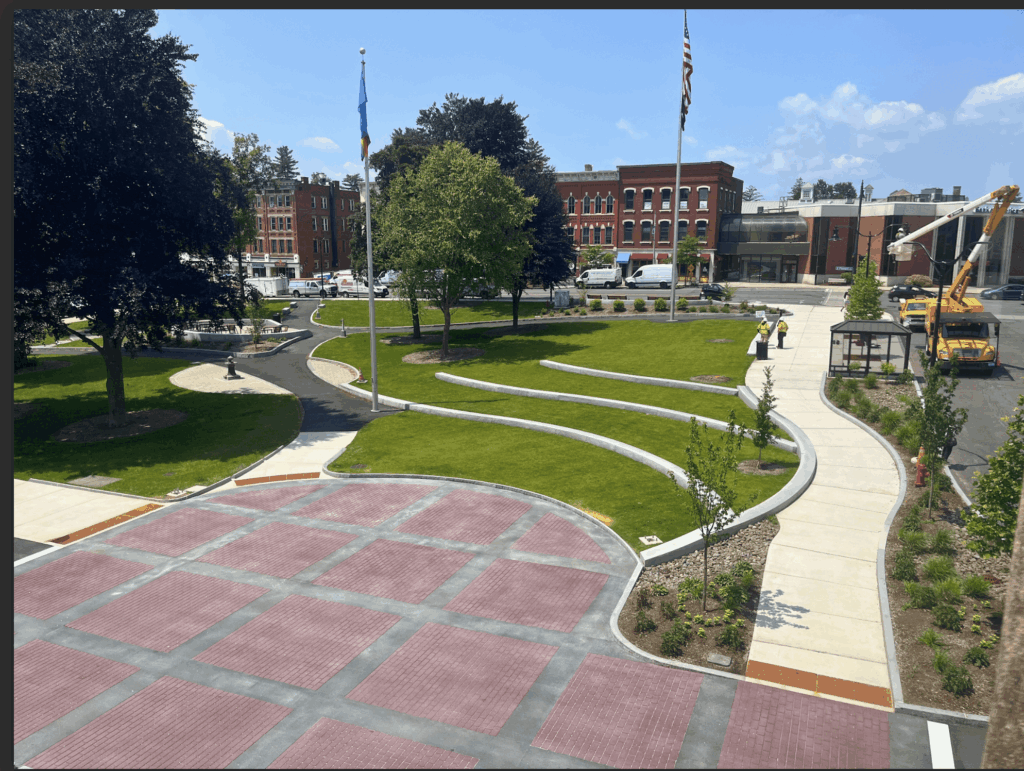

More about the history of Kenrick Park from the town website,
https://amherstma.gov/DocumentCenter/View/1978/KP_Historic_Timeline?bidId=
Great parks and very informative article. The issue I have with our parks is lack of regular swings or swing sets. Kids should learn not only how to use swings, but also how to safely maneuver around them. Important skills ignored for fear of litigation.
As a former long-time resident of Amherst, I don’t like the NEW COMMON or most of the so-called improvements to the town I grew up in. It’s barely recognizable; especially downtown and North Amherst where I grew up on 44 Summer Street.
I’m with you on the North Common, Margaret. As well as the felling of its venerable Merry Maple three years ago (which I still mourn), the amount of concrete that carves it up now is unsightly and unnatural. I sincerely hope they won’t do any more of the same to the other half of the common where the fairs and markets take place.
A North Common-related question for anyone who knows: what stops us from using the part of our town common across Rt. 9? Has Amherst College taken it over? If so, how and why did that happen? If not, how can we reclaim it?
Is the North Common a little bit of “lipstick on a pig, “ or buying steak for supper when hot dogs will break the budget? A 24-karat park but all the roads to get there aren’t drivable? Like new sidewalks on both sides of North Pleasant street including a complete street in front of five or six houses all replacing adequate existing ones while East Pleasant Street has none? Why do State grants not consider our real needs in allotting our taxes? Sorry, my age is showing; my life was cursed by having survived the Depression and the rationing of WW2.